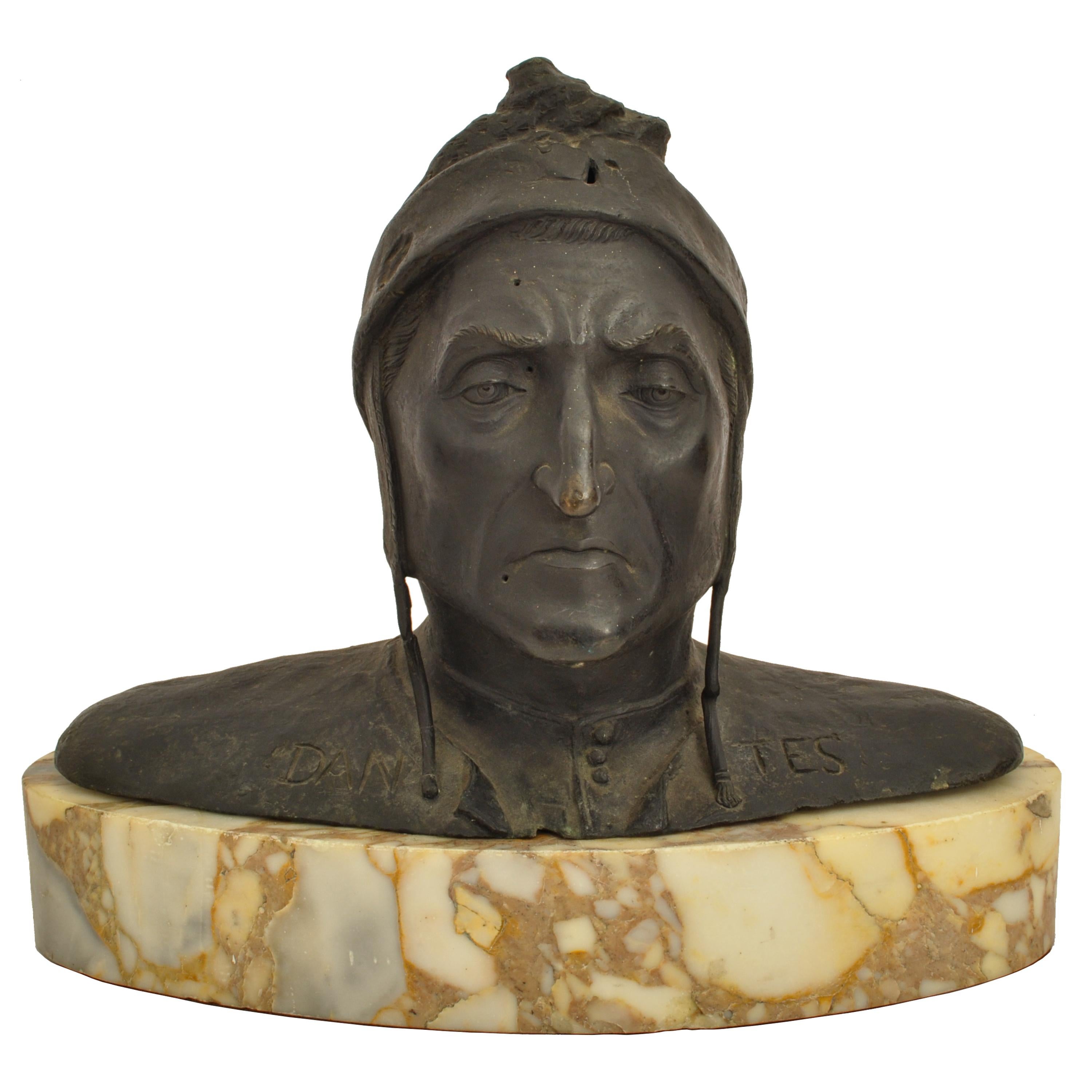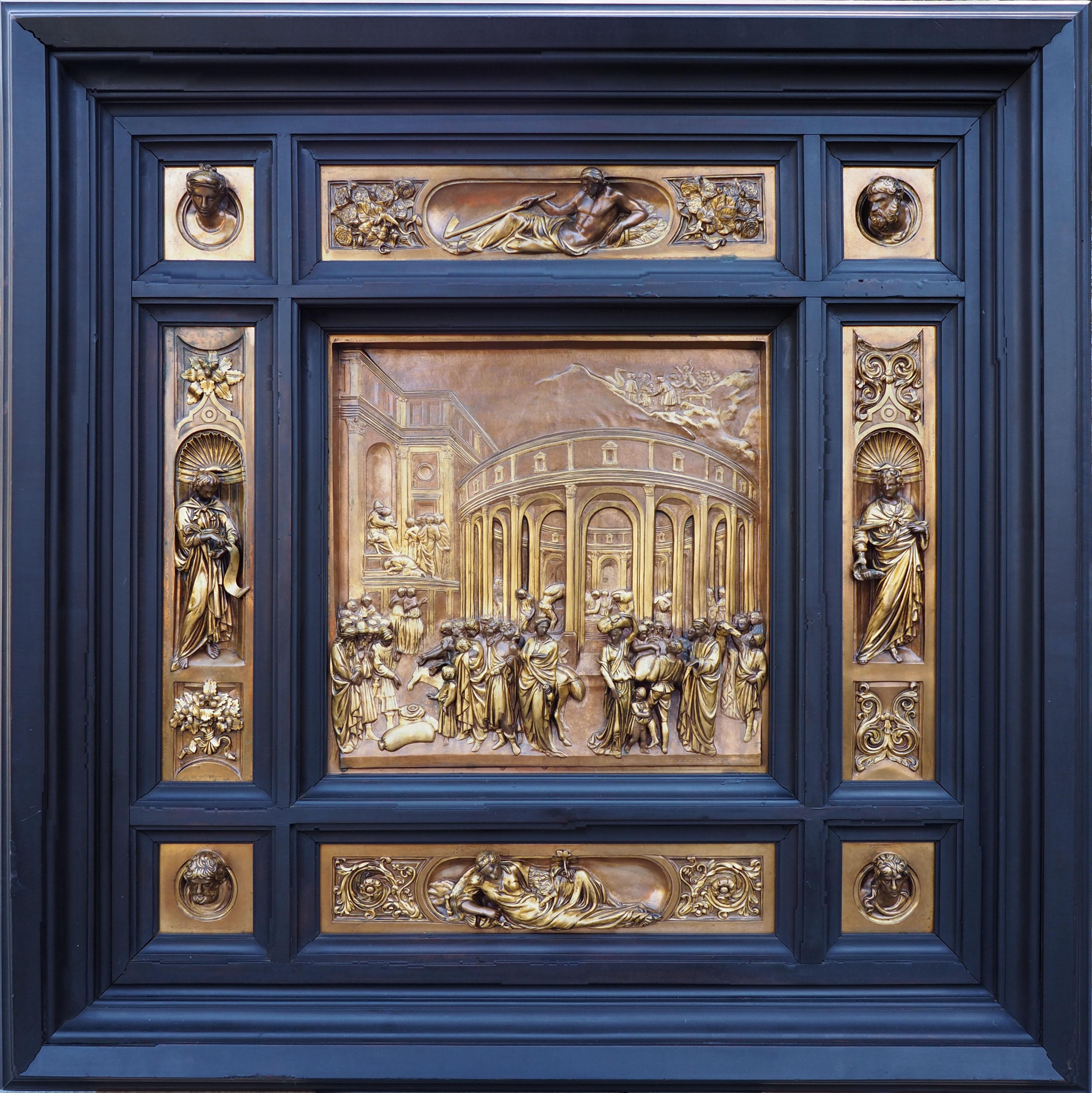Items Similar to Léopard au repos [Leopard at rest]
Want more images or videos?
Request additional images or videos from the seller
1 of 2
Rembrandt BugattiLéopard au repos [Leopard at rest]1911-1925
1911-1925
About the Item
Rembrandt Bugatti
Léopard au repos [Leopard at rest]
Lost-wax cast bronze, blackish-brown patina
31,5 x 49 x 13,5 cm
Signed on the base with foundryman’s stamp (A. A. [Hébrard])
Despite the sculpture’s title, Léopard au repos [Leopard at rest], a considerable tension subtends the metal. The noble creature is on high alert, standing to attention as if sensing its prey. A barely contained thew struggles within the material bounds of the bronze, a formidable physical strength that threatens to erupt at any moment. The loosely worked surface of this powerful sculpture trembles with life. Specific features are suggested, but never fully realised. Details yield to compositional coherence. Light plays over the undulating planes of metal, alternating sharply between dark and light. Upon approach, the surface appears irregular and textured: fingerprints are everywhere, evoking animal hair and emphasizing the artist’s presence, serving thus as a final signature. This natural, almost random quality reminds us of the living, breathing animal that inspired this work. The dark bronze, furthermore, is a source of mystery – from a distance, the sculpture resembles a silhouette. Yet the sculpture is also marvellously static, characterized by a refined calm. In some ways, the animal echoes monuments of reclining lions and sphinxes around the world. Its majestic appearance does, however, emerge more psychologically complex: by depicting his leopard upright, Bugatti invests in him a certain agency, of which purely decorative animal sculptures are deprived. It is as much a portrait as an ornament. Like his namesake, Rembrandt Bugatti was gifted with a rare ability to capture the essence of his subjects.
- Creator:Rembrandt Bugatti (1885-1916, Italian)
- Creation Year:1911-1925
- Dimensions:Height: 12.41 in (31.5 cm)Width: 19.3 in (49 cm)Depth: 5.32 in (13.5 cm)
- Medium:
- Period:
- Condition:
- Gallery Location:PARIS, FR
- Reference Number:1stDibs: LU2003210338232
Rembrandt Bugatti
Fils du renommé décorateur Carlo Bugatti et frère cadet du constructeur automobile Ettore Bugatti, Rembrandt Bugatti est connu à la fois pour ses bronzes animaliers et sa fin prématurée. Né à Milan en 1884, il réalise sa première œuvre importante en 1901, une sculpture d’un quatuor de vaches qui révèle tôt ses préoccupations animalières. Le talent de Bugatti est rapidement reconnu et, jeune encore, il connaît le succès. Achim Anscheidt, designer en chef chez Bugatti Automobiles, dira qu’il avait une capacité singulière « pour saisir le mouvement des animaux dans ce qu’il a de plus expressif ». En 1904, il est pris sous contrat d’exclusivité par le fondeur Adrien-Aurélien Hébrard. La qualité et la patine du bronze qu’il reçoit ainsi demeurent très recherchées sur le marché de l’art. Fasciné par les animaux exotiques, il parcourt le Jardin zoologique d’Anvers pour trouver de nouveaux modèles. Bien au courant d’un regain d’intérêt pour les sujets animaliers au XIXe siècle dans les tableaux de Géricault et Delacroix, ainsi que des bronzes florentins de la Renaissance par ses compatriotes Giambologna et Verrocchio, Bugatti cherche à redéfinir le rôle de la bête dans l’art plastique. Tout se passe à merveille jusqu’à ce que la Grande Guerre éclate, où, s’engageant dans la Croix-Rouge, il devient tuberculeux. Touché par sa maladie et perturbé par les atrocités de la guerre, il se suicide en 1916 à l’âge tendre de 32 ans, interrompant tragiquement une vie si prometteuse. Les sculptures de Bugatti se trouvent au Musée des Beaux-Arts de Rennes, au Musée d’Orsay, au Musée cantonal des Beaux-Arts de Lausanne, au Hirschhorn Museum, Washington. Elles figurent aussi dans la collection privée d’Alain Delon. Dans la première décennie du XXe siècle, Bugatti participe à la Biennale de Venise. En 1911, il est officier de la Légion d’Honneur. Des expositions de ses œuvres ont lieu en 1904 et 1911 à la Galerie Hébrard, et en 1979 au Royal College of Art. En 2014, l’Alte Nationalgalerie de Berlin lui consacre une rétrospective posthume.
About the Seller
No Reviews Yet
Vetted Seller
These experienced sellers undergo a comprehensive evaluation by our team of in-house experts.
1stDibs seller since 2022
- ShippingRetrieving quote...Ships From: PARIS, France
- Return PolicyThis item cannot be returned.
You May Also Like
- Surreal Figurative Sculpture, "Lovers"Located in San Diego, CAThis is a one of a kind original bronze surrealist figurative sculpture by San Diego artist, Debbie Korbel. Its dimensions are 41" x 42" x 34". A certifi...Category
2010s Surrealist Figurative Sculptures
MaterialsBronze
- Antique Italian Grand Tour Bronze Marble Bust Sculpture Dante Alighieri 1880Located in Portland, ORA good antique Italian Grand Tour Bronze and marble bust of Dante Alighieri, circa 1880. The bronze is most likely Florentine and mod...Category
Late 19th Century Italian School Figurative Sculptures
MaterialsMarble, Bronze
- WHITE HINGED POEM DRESS,By Lesley DillLocated in New York, NYLESLEY DILL WHITE HINGED POEM DRESS, 1994 patinated bronze 55 x 37 x 30 in. 139.7 x 94 x 76.2 cm. Edition of 4Category
1990s Contemporary Figurative Sculptures
MaterialsBronze
- Growing in a Fragmented LandscapeBy Jennyfer StratmanLocated in Los Angeles, CAThere is a metaphorical interplay between the natural imagery international artist, Jennyfer Stratman, uses and its multiple meanings. While the human figure features strongly, it is...Category
21st Century and Contemporary Contemporary Figurative Sculptures
MaterialsMetal, Bronze, Enamel, Steel, Copper
- Cefiro - Renaissance Inspired Bronze Sculpture of an Acrobat set on Tall StandBy Jesus Curia PerezLocated in Chicago, ILCefiro is derived from the Spanish word for Zephyr, meaning a soft gentle wind which brings spring to the Mediterranean. The word also depicts beauty and playfulness. This figure p...Category
21st Century and Contemporary Contemporary Figurative Sculptures
MaterialsBronze, Steel
- The Story of Joseph from the Second Baptistery Doors, Florence (“The Gates of PaBy Ferdinand BarbedienneLocated in New York, NYFerdinand Barbedienne (Saint-Martin-de-Fresnay 1810 – 1892 Paris) after Lorenzo Ghiberti (Florence, 1378 – 1455) Signed at the lower right of the principal relief: F. BARBEDIENNE Provenance: Private Collection, USA. Barbedienne’s “Gates of Paradise” reliefs are one of the triumphs of nineteenth-century bronze casting and patination. The nine panels that comprise our example are half-size reductions of the famous originals by Lorenzo Ghiberti, made for the Baptistery of Florence and now housed in the Museo del Opera del Duomo. Mounted in an impressive, mullioned frame surround, our work is an exceptional exemplar of the Renaissance Revival, the broadly influential style and movement that infused architecture, design, and artistic culture in the latter half of the nineteenth century. The central scene, The Story of Joseph, is perhaps the most celebrated of the entire series depicting as it does seven episodes from the Biblical narrative integrated into a single composition: Joseph cast by his brethren into the well, Joseph sold to the merchants, the merchants delivering Joseph to the pharaoh, Joseph interpreting the pharaoh’s dream, the pharaoh paying him honor, Jacob sending his sons to Egypt, and Joseph recognizes his brothers and returns home. The surrounding reliefs—two vertical figures in niches, two recumbent figures, and four portrait heads in roundels—are as well faithful reductions of Ghiberti’s original bronzes on other parts of the doors. The maker of these casts was the renowned 19th-century French fondeur Ferdinand Barbedienne. Gary Radke has recently written of this great enterprise: “The Parisian bronze caster Ferdinand Barbedienne began making half-sized copies of ancient and Renaissance sculpture in the 1830s. His firm benefitted enormously from the collaboration of Achille Collas, whom Meredith Shedd has shown was one of numerous pioneers in the mechanical reproduction of sculpture. Their competitors largely devoted themselves to reproducing relief sculpture, but Collas devised a process for creating fully three-dimensional copies. A tracing needle, powered by a treadle, moved over the surface of a full-sized plaster cast or bronze of the original and triggered a complementary action in a cutting stylus set over a soft plaster blank…He signed an exclusive contract with Barbedienne on November 29, 1838, and won medals for his inventions in 1839 and 1844. Barbedienne’s half-sized copies of the Gates of Paradise were famous not only for their fidelity to the original, but also for the way their gilding…suggested the glimmering surface that was hidden under centuries of dirt. Some critics even saw Collas’s and Barbedienne’s work as ‘philanthropic, an exemplary adaptation of industry to the requirements of art, the artist, the workers, and the public alike.’ At 25,000 francs, Collas’s and Barbedienne’s reduction of the Gates of Paradise was singularly more expensive than any other item for sale in their shop. All the reliefs, individual statuettes, and busts were cast separately and could be purchased either by the piece or as an ensemble. Fittingly, Barbedienne’s accomplishment earned him the Grand Prix at the 1878 Paris Exposition Universelle, along with numerous other medals.” Three complete examples of the Barbedienne-Ghiberti doors are known. One, first installed in a chapel in the Villa Demidoff of San Donato near Pratolino, was later acquired by William Vanderbilt...Category
Late 19th Century Figurative Sculptures
MaterialsBronze




